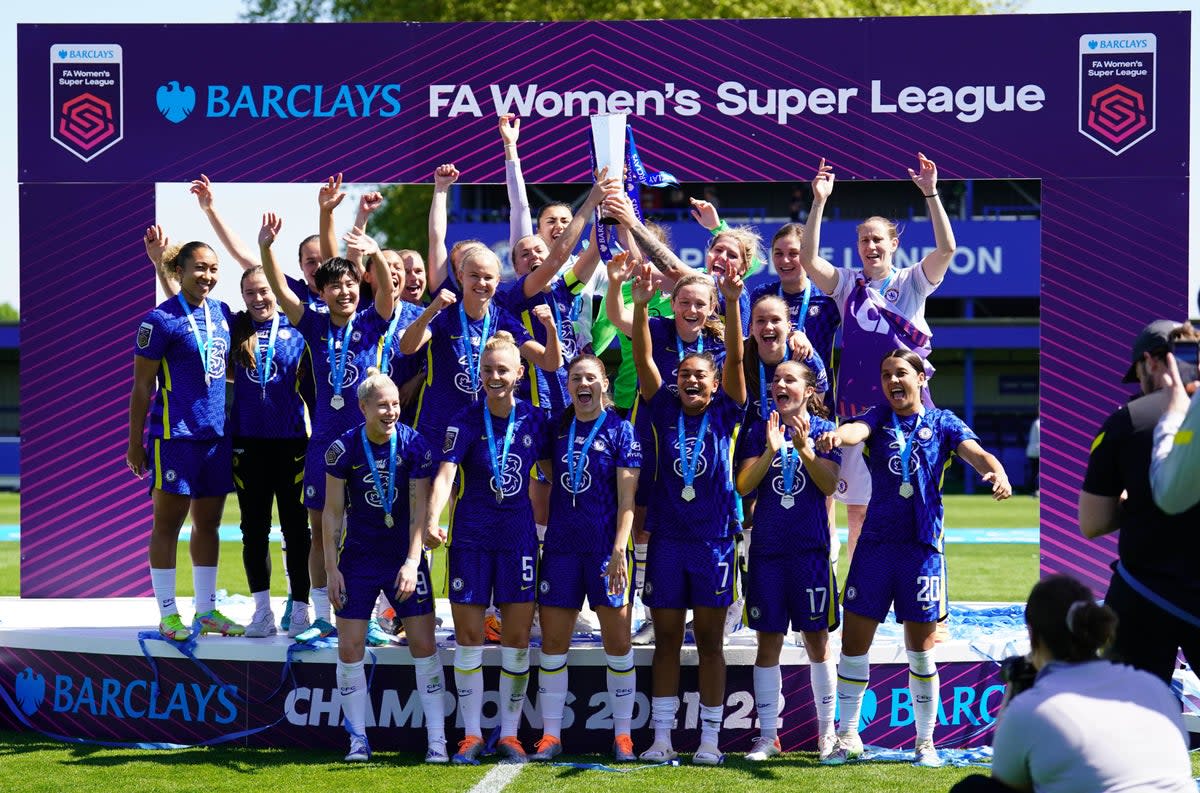Voices: Women’s football should look to LA for its future

Arsenal take on Brighton tonight as the delayed Women’s Super League gets started – after a minute’s silence and with black armbands.
While the game may be tinged with sadness, women’s football overall is still on a high – almost 90,000 people went to Wembley Stadium to watch England beat Germany 2-1 in the Women’s European Championship final this summer.
But it’s still not all plain sailing; if in the belief that women’s football is on the crest of something huge you have tried to enrol your daughter in a local club – or tried to buy some kit in the aftermath of said triumph – you’ll have seen there is still a long way to go.
Some 17.4 million fans were glued to that Euro 2022 final on TV, but the reality is that football-loving girls who want to play the game still feel unwelcome, not just when it comes to getting their hands on shorts, shirts, socks and boots, but in schools and clubs too. Even the elite players play and train in substandard facilities. Sarina Wiegman’s team triumphed in spite of the pitiful support they receive.
This is a pivotal point for women’s football. Uefa believes there could be 330 million fans by 2033; at 575,000, the Euro tournament’s attendance was double the record set in 2017; and tens of thousands of girls were reported to have started playing the game recreationally in England.
But the momentum will be lost unless we create an ambitious vision for the women’s game. We need to create a top-down and bottom-up model that ensures the game is developed at all levels: the broadcast rights will reflect the brilliance of the product and the skills of the elite players, and the grassroots will be nurtured too.
This is not fantasy football. It’s already a reality in Los Angeles where teams like Angel City FC are changing the game. We only need look at the strong women involved with them – Serena Williams, Natalie Portman, Jessica Chastain, Jennifer Garner and Eva Longoria – as an inspirational example of what modern sport can achieve if you rip up the old systems and start from scratch.
We need a similar blueprint for how to develop women’s football in the UK. Uefa believes that women’s football could see a sixfold increase in its commercial value over the next decade, and this is nothing like its full potential. But first, we need to think holistically rather than club by club. We need to be bold enough to wrap this up in one big revolutionary move, starting with getting the Football Association to relinquish its hold on the WSL.
Every level of the football pyramid must be overhauled. At the top, we can add new brands, new tournaments, new formats – and ensure that crucial girls’ and women’s kit and apparel are designed to reflect our physiological differences and a new set of role models. Why should our top teams be constrained to Europe? We should be playing the best of the USA regularly.
Second, we should go forward with real purpose and create a league that looks after its players – from more accessible pathways to professionalism, to a respect for maternity rights and a removal of the stigma that prevents discussion of menstruation and performance.
Post-career support is crucial, as is supporting much-needed infrastructure for communities. We need new women-friendly clubs to tackle the drop-out rate of girls, which is far too high. Women’s football will be a sport that nurtures. The product will benefit.
Third, the broadcasting rights strategy must be coherent and, importantly, designed to reach fans of all ages. And that means games must be scheduled at a consistent time and then streamed. The Premier League helped take football from the era of crumbling male-dominated terraces to a wonderfully immersive viewer experience with the use of multiple camera angles.
To keep up to speed with all the latest opinions and comment sign up to our free weekly Voices Dispatches newsletter by clicking here
The appetite for women’s football is there and a new deal will meet the demands of all fans of all ages and budgets from day one. TV rights – at the moment a minuscule fraction of the men’s game – have a huge potential and the WSL should look at Apple’s $2.5bn deal with Major League Soccer, signed this summer, in which all the men’s North American games are finally in one place, at predictable times.
Such a vision is not remotely unrealistic. The FA, I’m sure, would let go under the right terms. But it will need the commitment of serious people in the mould of Angel City founder Kara Nortman who will bring their skills and drive from the worlds of digital technology, entertainment and investment.
Kate McGregor is managing director of football media business COPA90

